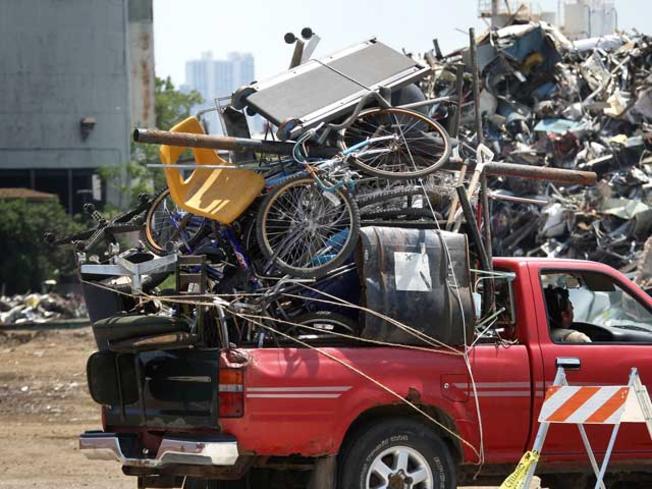A bright spot in California’s effort to divert waste from landfills
By Scott Smith
California’s plastic and paper recycling program may be struggling. And the state has made a mess of its e-waste program that is supposed to keep old televisions and computers out of the landfill.
But there is one bright spot – California’s program to recycle massive amounts of metals from old appliances, cars, construction scraps, and countless other consumer products.
For nearly 50 years, California has been a leader in not just keeping this metal out of our landfills, but in converting it into valuable products. In doing so, the State has created a robust industry that touches every town, city, and county in the state.
Scrap metal recycling provides California with an estimated 51,000 jobs that represent a total of $3.6 billion in wages. The industry’s economic impact in the state is $11.5 billion. It also generates more than $1.5 billion in tax revenue for California governments.
At a street level, tens of thousands of people have built mom-and-pop businesses collecting metals from businesses and neighborhoods. These are typically minority-owned businesses providing income for a segment of our population without much education or another opportunity for economic advancement. These scrap metal collectors have been able to support families by collecting tons of end-of-life products that would otherwise end up in the landfill. They rightly consider themselves environmentalists who provide a valuable service that keeps their communities from blight.
These collectors load up their trucks and drop off metals at local recycling centers that pay them based on weight. These centers sort the metals before delivering them to larger regional recyclers.
In addition to receiving metal from local centers, medium and large recyclers are the collection point for old cars, trucks and buses and metals from manufacturing plants. The old vehicles come from many sources – the State of California’s “cash-for-clunkers” program, auto dismantlers and non-profit organizations that receive old vehicles as donations. Before recycling, the dismantlers remove all gasoline, liquids, batteries and other potentially hazardous materials. Over a million end of life cars and over 3 million end of life appliances are recycled at these recyclers every year.
Metal recycling facilities engage in a very high-tech, sophisticated process that turns mountains of rusty, old cars and other scrap metals into raw stainless steel, iron, aluminum, steel, and copper. These products are exported and used in the manufacturing of new cars, appliances, and consumer goods, which reduces demand for natural resources.
Over decades, the shredding and recycling process has been refined to the point where 99 percent of all metals are recovered. What is left is something known as “shredder residue.” This includes shredded upholstery, plastic, glass and a minuscule amount of metal. For regulatory purposes, this end of process residue is chemically treated with a cement type mixture before being transported to a landfill as and used as daily cover.
Metal recycling has thrived as a good neighbor in part because it has excellent working relationships with its regulators – local fire departments, regional water boards, and air quality management districts. The regulators have required permits that project the environment and public health.
While household waste recycling is fraught with problems, California’s metal recycling industry has been successfully delivering tremendous benefits to the state’s environment and economy. It is an underappreciated effort that supports working families, diverts waste from landfills and creates value across the board.
Scott Smith serves as executive director of the Gateway Chambers Alliance, a group of 10 local chambers of commerce from across the Gateway Region of Los Angeles County representing hundreds of small businesses and thousands of jobs.

